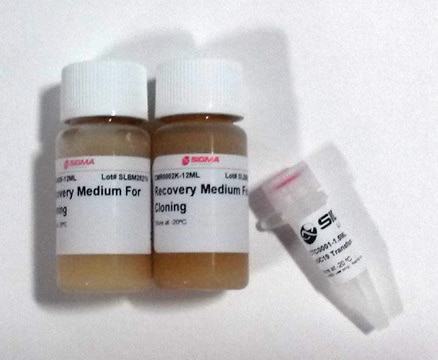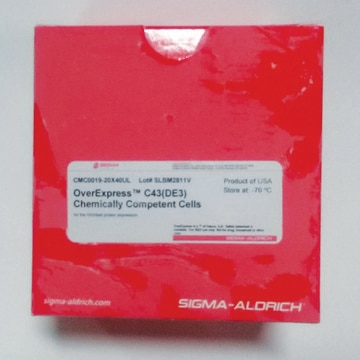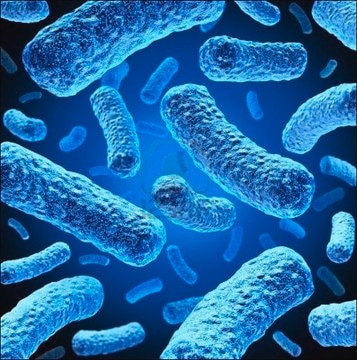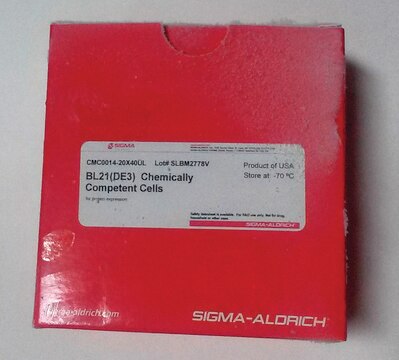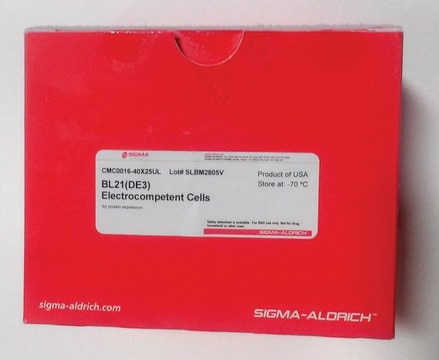CMC0017
OverExpress™ C41(DE3) Chemically Competent Cells
for the highest protein expression
Synonym(s):
C41 strain
About This Item
Recommended Products
biological source
Escherichia coli
grade
for molecular biology
growth mode
adherent or suspension
morphology
rod shaped
technique(s)
microbiological culture: suitable
cell transformation
competent cell type: chemically competent
transformation efficiency: ≥1 x 106 cfu/μg
shipped in
dry ice
storage temp.
−70°C
Related Categories
General description
Genotype
F – ompT hsdSB (rB- mB-) gal dcm (DE3)
Application
Features and Benefits
- Express genes cloned into any T7 vector with these BL21(DE3) derivatives
- Effective in expressing toxic & membrane proteins
- Cited in over 350 research articles
Components
- OverExpress C41(DE3) chemically competent cells
- pUC 19 transformation control DNA
- recovery medium for expression
Legal Information
related product
Storage Class
10 - Combustible liquids
wgk_germany
WGK 3
Certificates of Analysis (COA)
Search for Certificates of Analysis (COA) by entering the products Lot/Batch Number. Lot and Batch Numbers can be found on a product’s label following the words ‘Lot’ or ‘Batch’.
Already Own This Product?
Find documentation for the products that you have recently purchased in the Document Library.
Customers Also Viewed
Articles
Bacterial transformation is a process of horizontal gene transfer by which some bacteria take up foreign genetic material (naked DNA) from the environment. Bacteria that can take up free, extracellular genetic material are known as competent cells.
Protocols
Protocol for OverExpress™ Chemically Competent Cells. Product Numbers: CMC0017, CMC0018, CMC0019, CMC0020, CMC0023, CMC0024
Our team of scientists has experience in all areas of research including Life Science, Material Science, Chemical Synthesis, Chromatography, Analytical and many others.
Contact Technical Service